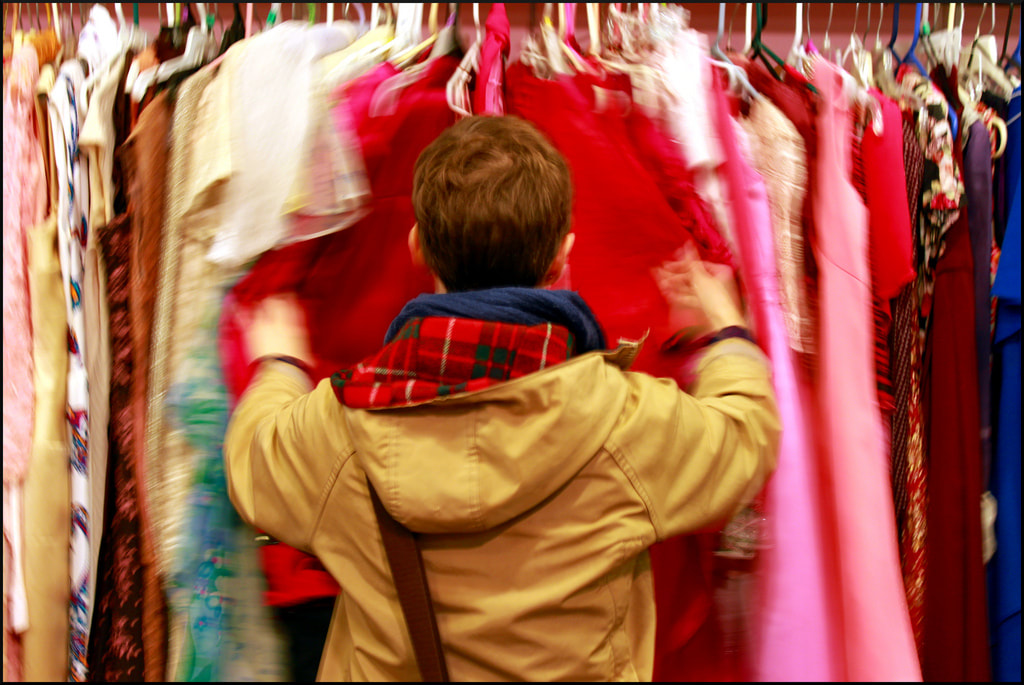For those of us who adore vintage clothing, whether for collecting, wearing, or both, there are some important guidelines to follow to be sure that you are getting the greatest bang for your buck, so to speak. If you’re new to the game, understand that it takes time and experience to truly realize a great piece of vintage clothing when you see it. To start you on your journey, or to keep you learning, try following these tips:
1. Although there are many reproductions out there, it is fairly easy to determine if the piece is vintage by looking at the label. Older labels are woven vs. printed and can tell you a great deal about the age of a piece. Vintage Fashion Guild has a wonderful label resource on their website that can help you in this area. Older garments often don’t have labels, so come in contact with as many pieces of true vintage clothing that you can before starting to purchase. You will quickly learn to spot an authentic 1950s house dress vs. a 1990s look-alike or a reproduction garment made last year.
2. Be sure that you check the piece for damage. I can’t tell you how often I bought clothing when I first started collecting without thoroughly examining the piece visually or giving it a good “sniff.” By skipping this step out of excitement in finding a great vintage dress, for example, I may not have noticed the musty odor coming from the piece until I had already purchased it and brought it home. There may be damage that you won’t be able to live with, so be sure to check that piece out completely before purchasing.

3. Quality counts! I am not a seamstress by any stretch of the imagination, but I’ve learned to appreciate excellent craftsmanship and tailoring by having contact with many garments over my years of searching and by examining historic garments in collections. Look at seams, hems, button holes, fabric integrity, linings, and any other details that you can see that will help you determine whether or not you should purchase the garment. Keep in mind that one of the great things about vintage clothing is that it was just better made back then. Clothing was meant to last, not to be disposed of after one season. So, in addition to owning a unique piece of clothing that one cannot find at the mall, you’ll also enjoy the garment for years to come.
4. Finally, so many wonderful books exist that can give you visual and factual information about vintage and antique clothing that will indeed help you to become a savvy shopper, particularly if you combine your reading with hands on experience to increase your confidence. Again, it takes time, so be patient and have fun!
